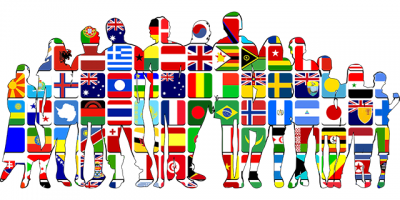
A bias is “prejudice in favor of or against one thing, person, or group compared with another, usually in a way considered to be unfair.”1 Relatedly, an implicit or unconscious bias is “a bias or prejudice that is present but not consciously held or recognized.”2
Unconscious biases are formed throughout our lives and are held at the subconscious level. As we gather millions of bits of information, our brain processes it in a certain way based on our societal and parental conditioning. Though most of us have difficulty accepting or acknowledging that we have biases, we all do. Implicit biases are everywhere, from our choice of where to live to the people we allow to be our friends, and it affects us more than we know.
Consider the following scenario: Two new DSVS volunteers are working with you on the same project. One volunteer appears to be a younger lady, while the other is an older gentleman. What assumptions do you have, and what behavior may result in response to those assumptions? What if you realized the younger lady has many years of experience in the field, whereas the older gentlemen is new to the field after staying home many years with his children? Would you treat those two individuals differently? If you were in the position to offer a shared leadership role to one of the two volunteers, would their age be a factor?
There are several types of biases, which include:
 Ableism – Discrimination and social prejudice against people with disabilities and/or people who are perceived to be disabled.3
Ableism – Discrimination and social prejudice against people with disabilities and/or people who are perceived to be disabled.3
Ageism – Stereotyping and/or discrimination against individuals or groups on the basis of their age.4
Classism – Prejudice, stereotype or discrimination based on the person's perceived social class.
Homophobia – An irrational fear of gay, lesbian, bisexual, and transgender [GLBT] people.5
Racism – The presumed biological or cultural superiority of one or more racial groups is used to justify or prescribe the inferior treatment or social position(s) of other racial groups.6
Sexism – Prejudice, stereotype or discrimination based on one’s perceived gender.
Xenophobia – The fear or hatred of that which is perceived to be foreign or strange.7
As providers of support and services to victims of domestic violence, sexual violence, stalking, and human trafficking, it is imperative that we seek to remain aware of our biases, how they impact our views and how they inform our behavior toward others. Although we may not think our biases are evident to those we serve, they are, and can exact an enduring negative impact our service delivery. Our interactions with victims can encourage their continued interest in our services or dissuade their current and future willingness to seek our support.
Fortunately, resources such as Project Implicit through Harvard University help identify unconscious attitudes and beliefs through a variety of Implicit Association Tests, and the Implicit Bias Module Series through the Kirwan Institute for the Study of Race and Ethnicity, educates on the origins of implicit associations, helps uncover biases and provides strategies for addressing them. Identifying our biases is the first step toward changing them and mitigating associated harmful behaviors. —Mena Nakhla and the DSVS Equity Workgroup
1 Dictionary.com.
2 Merriam-Webster dictionary.
3 Linton, Simi. Claiming Disability Knowledge and Identity (1998). New York: New York University Press.
4 Nelson, T.D., ed. Ageism: Stereotyping and Prejudice against Older Persons (2002). MIT Press.
5 Renzetti, Claire M.; Edleson, Jeffrey L. Encyclopedia of Interpersonal Violence, p. 338. (2008) Sage Publications.
6 Clair, M.; Denis, J. Sociology of Racism (2015). Harvard University.
7 Bolaffi, Guido. Dictionary of Race, Ethnicity and Culture (2003). Sage Publications
This article posting is part of the Domestic and Sexual Violence Services' Volunteer Voices monthly newsletter for current and potential volunteers. If you're not already a volunteer, learn how to get involved. Find out about upcoming trainings, volunteer trainings, happenings around the DSVS office and information about articles, books, media recommendations and more.
Learn more about the Domestic and Sexual Violence Services (DSVS).

